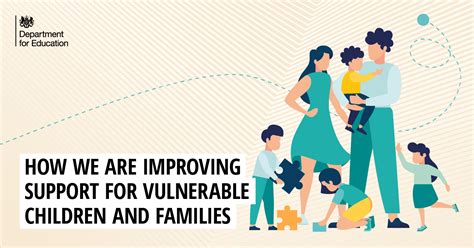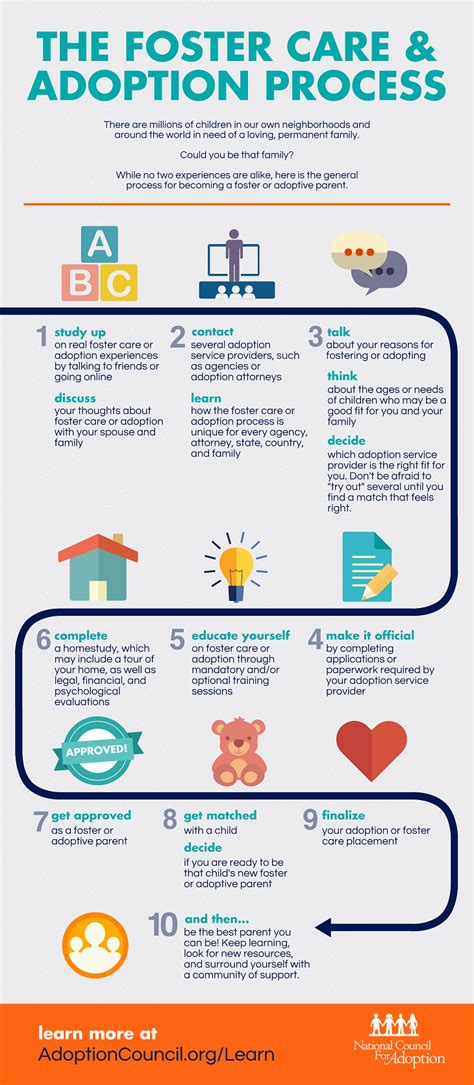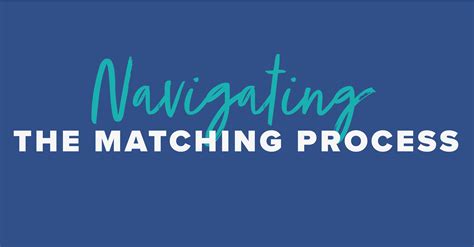Have you ever envisioned fulfilling a profound yearning to create a nurturing family environment? Many individuals share this deep-rooted desire to offer a loving home and support to a child in need. While the process may seem intricate and overwhelming, unraveling the intricacies of embracing a foster child can ultimately lead to an enriching journey of companionship, growth, and fulfillment.
In this informative guide, we navigate the maze of considerations and steps involved in welcoming a foster child into your life. Empowering you with valuable insights and resources, we aim to help you embark on this significant endeavor, while highlighting the profound impact it can have on both your life and the life of a child.
Every individual’s journey towards parenthood is unique, and the decision to open your home to a foster child requires careful thought and preparation. Understanding the legal and emotional aspects involved, as well as the challenges and rewards that come with it, can pave the way for a successful and fulfilling adoption process. By exploring various paths to adoption, we endeavor to provide you with a comprehensive understanding of the options available, thereby guiding you towards the most suitable avenue for realizing your aspiration.
Understanding the System of Supporting Vulnerable Children

When embarking on the journey of bringing hope and stability to a child's life, it is crucial to have a deep understanding of the intricate foster care system. Familiarizing oneself with the processes, policies, and resources within this system is essential to ensure a successful and fulfilling experience.
The foster care system is a structured network designed to provide temporary care for children who have been removed from their biological families due to various reasons. It aims to safeguard their well-being, offer stability, and support their development in a nurturing environment. This system operates through partnerships involving governmental agencies, nonprofit organizations, and loving foster families.
Within the foster care system, there are different types of foster care placements available, each catering to the unique needs of the children involved. These placements can range from emergency care, where children are placed with foster families for a short period, to long-term care, where the child may reside in a foster home until they reach adulthood.
Understanding the complexity of the foster care system also involves awareness of the legal and regulatory framework that governs it. Child protection laws differ across jurisdictions, and conversance with the specific regulations in your area is crucial. Familiarity with the application and assessment process, training requirements, and home evaluation procedures will help prospective foster parents navigate the system effectively.
Additionally, gaining knowledge about the available resources and support networks is vital for foster families. These resources could include counseling services, educational assistance, financial aid, and respite care for when the foster parents need temporary relief from their caregiving responsibilities.
| Key Points to Understand About the Foster Care System |
|---|
| 1. Types of foster care placements |
| 2. Legal and regulatory framework |
| 3. Application and assessment process |
| 4. Training requirements |
| 5. Home evaluation procedures |
| 6. Available resources and support networks |
Gaining a comprehensive understanding of the foster care system will empower individuals to take informed steps towards making a positive impact on the lives of vulnerable children. By familiarizing oneself with the processes and resources involved, prospective foster parents can make well-informed decisions and provide a safe and nurturing environment for a child in need.
Evaluating Your Preparedness for Adoption
Before embarking on the journey of bringing a child into your family through adoption, it is crucial to assess your readiness for this life-changing commitment. Understanding and evaluating your emotional, financial, and practical capabilities will help ensure a positive and successful adoption experience.
- Reflect on Your Motivation: Take the time to deeply reflect upon your reasons and motivations for wanting to adopt. Consider how your desire to provide a loving and stable environment for a child aligns with your personal values and long-term goals.
- Evaluate Your Emotional Preparedness: Adoption is a profound process that involves emotional complexities. Reflect on your emotional resilience, ability to handle stress and uncertainty, and how prepared you are to navigate potential challenges and setbacks that may arise during the adoption journey.
- Assess Your Financial Stability: Determine your current financial stability and how the financial responsibilities of raising a child would fit within your budget. Calculate the costs associated with adoption, including legal fees, home study expenses, and ongoing expenses related to the child's needs, education, healthcare, and overall well-being.
- Consider Your Support System: Evaluate the strength of your support system, including family, friends, and community. Adoption can be emotionally demanding, and having a strong network of support can make a significant difference in your ability to navigate the challenges and joys of parenting an adopted child.
- Educate Yourself: Educate yourself about the adoption process, the legal requirements, and the different types of adoption available. Familiarize yourself with the potential challenges and rewards associated with adopting a child, and seek guidance from professionals and experienced adoptive parents to ensure you have a comprehensive understanding of what to expect.
- Analyze Your Current Lifestyle: Consider your lifestyle, daily routines, and personal commitments. Assess how adopting a child would impact your work-life balance, free time, and other activities. Be honest with yourself about the adjustments you are willing to make to prioritize the needs and well-being of an adopted child.
- Take Time for Self-Reflection: Engage in introspection and self-reflection to assess your capacity for unconditional love, patience, flexibility, and empathy. Adoption requires a strong foundation of emotional readiness, so taking the time to reflect on and strengthen these qualities within yourself is crucial.
By thoughtfully considering these aspects of your life and evaluating your preparedness for adoption, you will be better equipped to navigate the complexities of the process and provide a loving and nurturing home for a child in need. Remember, adoption is a lifelong commitment, and embarking on this journey with a solid foundation will greatly contribute to the success of your family's adoption experience.
Exploring Agencies for Foster Care Adoption: A Comprehensive Exploration Process

When embarking on the journey of fostering a child, it is crucial to thoroughly research and evaluate various adoption agencies that specialize in foster care. By taking the time to explore different agencies, prospective parents can gain valuable insights and make informed decisions on the best match for their family.
Conducting in-depth research allows individuals to gather information about the different agency options available, their reputation, and their established processes. It also enables prospective parents to understand the range of services offered by each agency, including support programs, counseling, and post-adoption resources.
Analyze the mission and values of potential agencies, seeking alignment with personal goals and principles. Assess the agency's track record by considering the number of successful adoptions they have facilitated, the average process time, and the support provided during the transition period.
Review feedback from other adoptive parents who have utilized the agency's services. Online platforms and forums can serve as valuable resources to learn from others' experiences and gain insights into the agency's strengths and potential areas of improvement.
Throughout the research process, consider reaching out for consultations or attending information sessions offered by the agencies. Engage in conversations with professionals and experts to clarify any concerns and gain a better understanding of the agency's philosophy and approach to foster care adoption.
Ultimately, effective research and evaluation of foster care adoption agencies will provide prospective parents with the necessary knowledge and confidence to make well-informed decisions, ensuring the best possible match for themselves and their future child.
Exploring Adoption Information Sessions: A Valuable Resource for Prospective Parents
Discovering the path to welcoming a new member into your family can be an enlightening and transformative journey, full of hope and anticipation. A crucial step in this process involves attending adoption information sessions, which serve as invaluable resources for individuals considering adoption.
During these sessions, aspiring parents have the opportunity to gather essential knowledge and insights about the adoption process. Professionals from reputable adoption agencies or organizations provide detailed information, discuss legal requirements, and share personal experiences to help individuals navigate through the complexities of adoption.
Adoption information sessions serve multiple purposes, including provoking thought, clarifying misconceptions, and answering queries that potential parents may have. These sessions cultivate an environment that promotes open dialogue, allowing participants to share their concerns, fears, and aspirations with both professionals and other prospective parents.
One of the key benefits of attending these sessions is the chance to gain a comprehensive understanding of the different types of adoption available. This knowledge equips individuals to make informed decisions based on their circumstances and preferences when it comes to choosing between international adoption, domestic adoption, foster care adoption, or other avenues.
Furthermore, adoption information sessions shed light on the legal and financial aspects associated with adoption. Participants learn about the documentation requirements, necessary background checks, and fees involved, providing them with clarity on the legal obligations and financial commitments that come with the adoption process.
It is important to emphasize that attending adoption information sessions is not solely for those already committed to the adoption journey. Even individuals who are at an early stage of considering adoption can benefit greatly from these sessions. By obtaining a wealth of information and support, attendees acquire the tools they need to evaluate their readiness for adoption and make well-informed decisions regarding their personal circumstances.
In summary, adoption information sessions offer a platform for prospective parents to not only educate themselves about the adoption process but also engage with professionals and others who share a similar dream. By participating in these sessions, individuals can acquire vital knowledge, clarify doubts, and gain a deeper understanding of the pathways and responsibilities involved in bringing a child into their loving home.
Completing the Home Study Process

Embarking on the journey of bringing a new member into your family involves several crucial steps, one of which is completing the home study process. This essential procedure ensures that prospective parents are ready and capable of providing a loving and nurturing environment for a child.
The home study process, although comprehensive, can be a rewarding experience as it allows you to showcase your preparedness and dedication to raising a child. To successfully navigate this stage, follow the steps outlined below:
- Gather the necessary documentation: Start by gathering all the required documents, such as identification, financial records, employment verification, and personal references. These documents are crucial in assessing your ability to provide for the child's needs.
- Attend information sessions: Participate in information sessions provided by your adoption agency or social worker. These sessions will provide you with valuable insights into the home study process, adoption laws, and the expected timeframes.
- Prepare your home: Create a safe and welcoming environment for the child. Make sure your home is childproofed, with secure locks, appropriate room arrangements, and necessary safety equipment. Take the time to ensure that your home reflects a warm and nurturing space for a child to thrive.
- Undergo interviews and assessments: Expect to undergo a series of interviews and assessments with a social worker or licensed professional. These interviews will cover various aspects of your life, including your upbringing, relationships, parenting styles, and overall readiness to adopt.
- Provide references and background checks: Submit references from individuals who can attest to your character, life skills, and parenting abilities. Additionally, be prepared to undergo background checks, including criminal record checks, to ensure the child's safety and well-being.
- Complete required training: Depending on the jurisdiction and adoption agency, you may need to complete training courses or workshops. These programs aim to provide adoptive parents with valuable knowledge and skills needed to navigate the challenges of parenting an adopted child.
- Prepare a written autobiography: Write a heartfelt autobiography that highlights your personal journey, motivations for adoption, and your vision for the child's future. Your autobiography allows the adoption agency to gain a deeper understanding of your family dynamics and aspirations.
- Submit necessary paperwork: Once you have completed all the required steps, submit the necessary paperwork, including the application, financial statements, personal references, autobiography, and other requested documents, to the adoption agency.
Completing the home study process is a significant step towards fulfilling your dream of expanding your family through adoption. By approaching this process diligently and with genuine care, you enhance your chances of being approved as a prospective adoptive parent, setting the stage for a future filled with love, growth, and cherished memories with your adopted child.
Preparing Your Home: Creating a Welcoming Environment
When embarking on the journey of opening your home to a foster child, it is essential to ensure that your living space is warm and inviting, providing a nurturing environment for their growth and well-being. By taking the time to prepare your home, you can create a welcoming space that reflects your commitment to providing a safe and loving temporary home for a child in need. Here are a few key steps to consider as you prepare your home for this new chapter in your life.
Making it Safe: Prioritize the safety of your home by identifying and addressing any potential hazards. This may involve installing childproof locks on cabinets, securing electrical outlets, and ensuring that sharp objects or toxic substances are stored out of reach. Conduct a thorough safety assessment of each room, paying attention to things like window locks, stair gates, and furniture stability.
Creating a Cozy Space: Foster children often long for a sense of comfort and stability. It is important to create a cozy and personalized space for them within your home. Consider providing them with their own bedroom or designated area that they can call their own, furnished with familiar items and decorations that reflect their individuality. This will help them feel a sense of belonging and security in their new environment.
Promoting Healthy Development: Foster children thrive in environments that promote their healthy physical, emotional, and cognitive development. This can be achieved by incorporating age-appropriate toys, books, and educational resources. Additionally, ensure that your home offers opportunities for outdoor play and recreation, as it is essential for their overall well-being and growth.
Fostering Open Communication: Creating an environment where open communication is valued is crucial in helping foster children feel comfortable and supported. Encourage conversation and actively listen to their thoughts and concerns. Foster a sense of empathy and understanding within your home, providing a safe space for them to express their emotions and experiences.
Building a Supportive Network: Preparing your home also involves establishing a strong support network. Reach out to local foster care organizations, support groups, or social services that can offer guidance and assistance throughout the process. Building connections with other foster families can also be invaluable, as it provides an opportunity for shared experiences and support.
By taking these steps to create a welcoming environment, you can lay the foundation for a positive and meaningful experience for both you and the foster child. Remember, your home has the power to significantly impact their journey and contribute to their overall well-being.
Exploring the Legal and Financial Aspects: Understanding the Essential Elements

Introduction: This section focuses on delving into the important legal and financial considerations when contemplating the fulfillment of one's desire to provide a nurturing home for a child in need. By comprehending the fundamental elements associated with the legal process and financial responsibilities, individuals can make informed decisions as they embark on their journey towards adoption.
Understanding the Legal Process: The legal aspects of adoption involve several critical steps that need to be followed to ensure a smooth and successful adoption experience. Familiarizing oneself with the legal terminology, documents, and procedures involved in the adoption process is paramount. One needs to become well-versed in adoption laws and regulations, such as consent requirements, home studies, background checks, and court proceedings, to navigate through the adoption process effectively.
Grasping the Financial Considerations: The decision to adopt a child also comes with financial responsibilities that individuals need to be prepared for. It is necessary to familiarize oneself with the various costs associated with adoption, including agency fees, legal fees, home study expenses, travel expenses, and ongoing financial commitments after the adoption is finalized. Exploring available financial resources, such as adoption grants, loans, and tax credits, can also alleviate the financial burden that may arise during the adoption journey.
Seeking Legal and Financial Guidance: Engaging the services of professionals, such as adoption attorneys and financial advisors, can provide invaluable expertise and guidance throughout the legal and financial aspects of adoption. These professionals can help individuals understand their rights and responsibilities, assist in completing necessary paperwork, and provide advice on financial planning and resources available to support the adoption process.
Conclusion: A thorough understanding of the legal and financial aspects of adoption is essential for individuals who aspire to adopt a child. By becoming well-informed about the legal process, financial considerations, and available resources, individuals can approach the adoption journey with confidence and ensure a smooth and successful adoption experience.
Building Connections with Vulnerable Children: Establishing Meaningful Relationships
One of the most important aspects of the journey towards fostering a child is the ability to build strong and genuine connections with vulnerable children. These children have often experienced various challenges and traumas, making it crucial for potential foster parents to establish meaningful relationships based on trust, empathy, and understanding.
- Be patient and understanding: It is essential to approach foster children with patience and understanding, as they may have experienced disruptions in their lives. Taking the time to listen and acknowledge their feelings can help create a safe and supportive environment for them.
- Show empathy: Foster children have unique experiences, and it is important to empathize with what they have been through. Demonstrating empathy can help them feel seen, heard, and valued.
- Encourage open communication: Foster children may have a difficult time expressing their emotions and needs. Encouraging open communication through active listening and creating a non-judgmental space can foster trust and strengthen the relationship.
- Engage in shared activities: Engaging in activities together can provide an opportunity for both foster parents and children to bond and create lasting memories. Whether it's participating in hobbies, playing sports, or cooking together, shared experiences can strengthen the connection.
- Respect their boundaries: Every child has their own boundaries, and it is important to respect them. By understanding their comfort levels and personal space, foster parents can create an environment where children feel safe and secure.
- Support their interests and dreams: Show genuine interest in the child's passions, hobbies, and aspirations. Offering support and encouragement can help foster children believe in their abilities and build their self-esteem.
Building connections with foster children is a continuous process that requires time, patience, and dedication. By approaching these children with love and compassion, foster parents can create a nurturing environment that supports the child's emotional growth and wellbeing.
Navigating the Matching and Placement Process

Managing the intricate process of finding the perfect match and ensuring a smooth placement can be a challenging endeavor along the path of realizing your aspiration to welcome a child into your family. This section will provide insightful guidance on how to navigate the complex journey of matching and placement without using specific terminology or directly referencing the dream, adopting, foster, child, step-by-step guide, and tips. In this section, we will delve into the intricacies of this phase and offer valuable suggestions to assist you in successfully navigating through each step.
Supporting Your Foster Child's Transition and Adjustment
Ensuring a smooth transition and adjustment for your foster child is crucial in creating a stable and loving environment for them. By providing the necessary support and understanding, you can help them navigate through the challenges that come with transitioning into a new family and home.
One important way to support your foster child during their transition is by establishing clear and consistent routines. This can provide a sense of stability and predictability, helping them feel more secure in their new surroundings. Creating a schedule for daily activities, such as meals, homework, and bedtime, can help them feel a sense of normalcy and structure.
Building trust is another essential aspect of supporting your foster child's adjustment. It is important to be patient and understanding as they may have experienced trauma or loss in their past. By consistently demonstrating trustworthiness and being reliable, you can help foster a secure attachment and build a strong foundation of trust in your relationship.
Communication plays a vital role in helping your foster child adjust to their new family dynamic. Encourage open and honest discussions to help them express their feelings and concerns. Actively listen without judgment, validate their emotions, and provide reassurance and support. By maintaining open lines of communication, you can help them feel heard, understood, and respected.
Supporting your foster child's educational needs is another key component of their transition and adjustment. Collaborate with their school to ensure they receive the necessary support and resources. Stay involved in their academic progress, attend parent-teacher conferences, and advocate for any additional assistance they may require. By prioritizing their education, you can help set them up for success in their new environment.
Lastly, it is essential to provide a nurturing and inclusive environment that celebrates diversity and individuality. Encourage your foster child to express their cultural heritage, interests, and talents. Embrace and respect their uniqueness, and help them feel accepted and valued as an integral part of the family.
| Helpful Tips for Supporting Your Foster Child's Transition and Adjustment |
|---|
| Create a consistent routine and schedule |
| Build trust through reliability and consistency |
| Prioritize open and honest communication |
| Support their educational needs |
| Celebrate diversity and individuality |
FAQ
What is the first step to take when considering adopting a foster child?
The first step is to research and educate yourself about the adoption process. Understand the requirements, regulations, and legalities involved in adopting a foster child.
Is adopting a foster child expensive?
The cost of adopting a foster child varies depending on several factors, such as the state you live in and the type of adoption you choose. However, adopting a foster child is often less expensive than other adoption methods, as there are financial assistance programs available.
How long does the adoption process take?
The duration of the adoption process can vary from several months to a few years. It depends on various factors, including the child's age, legal requirements, and the availability of suitable matches.
What are some common challenges when adopting a foster child?
Some common challenges include dealing with the child's trauma and emotional issues, adjusting to the new family dynamics, and navigating the complexities of the child welfare system. It is important to be prepared and seek support from professionals and support groups.
Are there special requirements to adopt a foster child?
Yes, there are specific requirements to adopt a foster child. These typically involve being at least 21 years old, completing a home study, attending adoption training, passing background checks, and demonstrating the ability to provide a safe and stable environment for the child.
What is the process for adopting a foster child?
The process for adopting a foster child usually involves several steps. First, you need to attend an orientation session where you will learn about the requirements and expectations of foster care adoption. Then, you will need to complete a home study, which includes background checks and interviews. After that, you will attend training sessions to prepare you for parenthood. Once you are approved, you will be matched with a foster child who is available for adoption. Finally, there will be a legal process to finalize the adoption.



